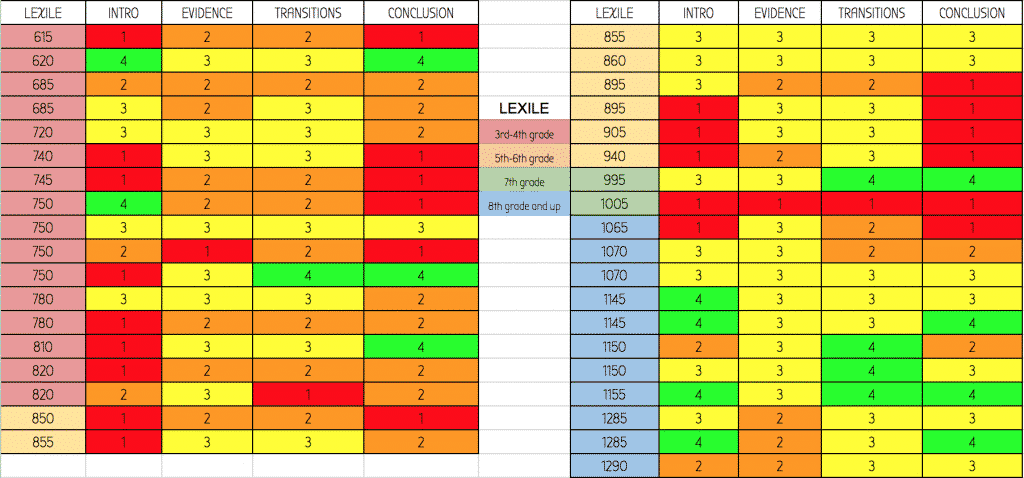
We are a month into the school year, and my data collection is coming along quite nicely. In fact, I’m elbow deep in it, a.k.a., grading my first pre-assessment. I usually take my time with the first one because I’m really trying to learn my students and their writing styles. It’s definitely a labor of love, and the data I collect is the rudder to my ship.
I’ve been writing a series of posts on the merits of collecting various data, and for this post, I’m obviously going to talk about pre-assessment scores. If you’ve missed my previous posts and are wondering where this is all coming from, I invite you to start here.
Where to start
Designing a good pre-assessment takes time and careful planning. I’m fortunate to belong to a strong Professional Learning Community (PLC) that is data-driven. As a result, we planned our pre-assessment at the end of last school year, with the intent of finalizing the details when we returned. It definitely gave us a focus for those first few meetings of the school year, and we’re now off to a great start.
Crafting your pre-assessment
Ask yourself and your PLC:
- What are the foundational skills that our students need in order to start the year off on the right foot?
- What do we expect them to already know?
Select 3-4 of those standards or skills that you will assess early in the school year. When you’re scoring their final product, only grade for those standards (even though you might want to edit every little error).
Our pre-assessment
Here’s the writing prompt we used along with the text, “The Firebreather,” from Scholastic Scope Magazine (you’ll need a subscription to access the articles):

Here’s the rubric we used for scoring:

As you can see, we really wanted to hone in on basic writing skills that we know are central to every forthcoming assignment. Yes, we could have also graded for mechanics and spelling, but those can be assessed at a later time.
Examine the data
After you’ve graded the pre-assessments, take a hard look at the data. I suggest putting it in a spreadsheet so that you can sit back and look at trends. Here’s the one I created for a class:

I used Conditional Formatting in Google sheets to color-code the scores in order to better get a read on their levels.
Next, take note of the following:
- What are your students’ strengths?
- What are their areas of needed improvement?
- Which skills need whole-class instruction?
- Which skills only need small-group instruction?
Compare your data to the other data you collected
I added a column with that class’ Lexile levels for the sake of comparison. Here’s what it looks like.

- Do you notice any trends?
- Is there a correlation between the students’ Lexile levels and their pre-assessment score?
- Anything surprise you?
Devise a plan for success
From this chart, it might seem as if I need to start with introductions. However, many of these students simply forgot to write an introduction, so I can’t really tell if it’s a weakness in writing, or if they didn’t understand the expectations (I told them to demonstrate what they’d learned in 6th grade). This was also the case with conclusions. That being said, from my teaching experience, I know that students tend to write weak introductions and conclusions, and since those skills were officially pre-assessed, they will be covered as well.
Since nobody earned a 4 in evidence and explanation, this is where I plan to start. I’ll also incorporate transitional words and phrases in the unit, and then wrap up with introductions and conclusions. I’m going to assess each of these skills individually throughout to ensure that my students are grasping the concept. If all goes well, this unit will take about 3 weeks, including reading expository texts and then using information from those texts to practice each standard.
I encourage you to discuss with your department/PLC your goals and standards you need to teach in the first grading period, and then follow this process. I’m sure it will prove to be an insightful exercise!
Next time, we’re going to look at demographics. Hope to see you back!
Using data to finding out your students strengths and weaknesses is key for driving your instruction. I personally like rubrics and design them to meet the needs of my assignments. I like how you compare data across the grade levels. I think that’s an important part of the process.